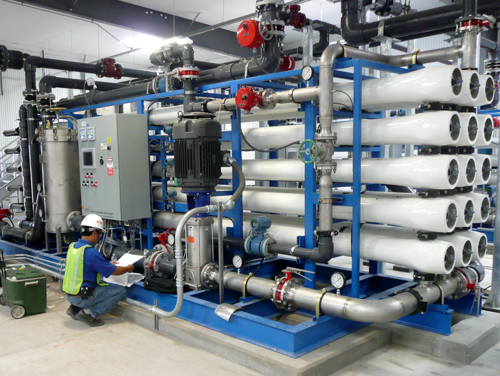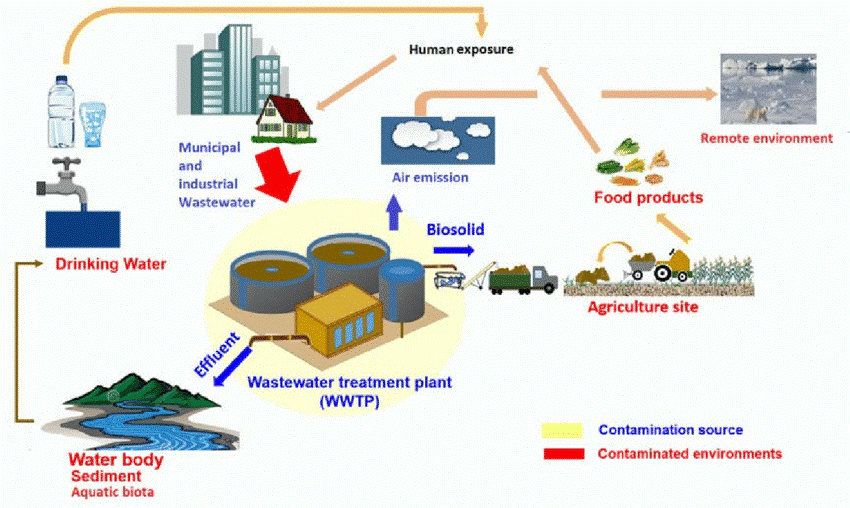How PFAS Treatment Makes Sure Tidy and Sustainable Water
The presence of PFAS, commonly referred to as "for life chemicals," presents considerable challenges to water top quality and public wellness. Advanced therapy innovations, consisting of activated carbon adsorption and membrane filtration, have actually become effective options to minimize these contaminants. By using these approaches, neighborhoods can not just attain cleaner water however likewise foster sustainable practices that safeguard environments. Nevertheless, the ramifications of these therapies prolong beyond prompt wellness advantages; they increase critical questions regarding lasting water administration methods that must be addressed to make sure a resistant future. What does this mean for our technique to water sustainability?

Understanding PFAS Contamination
PFAS, or per- and polyfluoroalkyl materials, have actually become a substantial environmental problem due to their extensive occurrence and perseverance in the atmosphere. These artificial chemicals have been used in numerous commercial applications and customer items, consisting of non-stick cookware, water-proof garments, and food packaging, due to their distinct buildings such as water and grease resistance.
The contamination of soil and water sources by PFAS occurs largely through industrial discharges, firefighting foam usage, and leaching from garbage dumps. pfas management. When released, these substances are resistant to deterioration, leading to their accumulation in the environment. This persistence increases vital issues, as PFAS can travel long distances through groundwater and surface area water supply, affecting drinking water supplies and environments

Wellness Threats of PFAS
The determination of PFAS in the environment elevates significant health and wellness issues for people subjected to these compounds. Study has actually connected PFAS direct exposure to numerous adverse health and wellness results, consisting of immune system dysfunction, liver damage, and boosted danger of specific cancers.
The ubiquity of PFAS in customer items, such as non-stick kitchenware, water-repellent fabrics, and food packaging, additional enhances the danger of direct exposure. Consuming water contaminated with PFAS is a significant problem, as these chemicals can seep right into groundwater resources. Susceptible populations, consisting of children and those living near industrial websites, may encounter elevated threats due to their creating systems and potential for greater exposure degrees.
As awareness of these wellness dangers continues to expand, governing companies are beginning to establish guidelines for PFAS levels in drinking check this site out water. Public health and wellness initiatives are important to minimize direct exposure and shield communities from the lasting results of these unsafe substances.

Innovative Treatment Technologies
Just how can we successfully take on the difficulties positioned by PFAS contamination in water resources? Cutting-edge therapy modern technologies are emerging as important services in the mission for tidy water. These techniques concentrate on the elimination or damage of per- and polyfluoroalkyl substances (PFAS), which are infamous for their perseverance in the atmosphere.
One encouraging technique is adsorption making use of advanced products, such as activated carbon and ion exchange materials. These products have revealed effectiveness in recording PFAS molecules from water. Another notable modern technology is membrane purification, which makes use of nanofiltration and turn around osmosis to separate pollutants at the molecular degree, hence supplying an obstacle versus PFAS.
Furthermore, progressed oxidation processes (AOPs) utilize solid oxidants to break down PFAS compounds right into harmless by-products. This method is specifically effective for dealing with extremely polluted water resources. Bioremediation strategies, employing specific microbes, are additionally being checked out to weaken PFAS.
As research study proceeds, hybrid systems that combine numerous modern technologies may use boosted performance, addressing the intricacies of PFAS contamination. The development and application of these ingenious treatment technologies are essential steps toward ensuring the safety and sustainability of our water sources.
Benefits of Effective PFAS Treatment
Efficiently treating PFAS contamination in water resources dramatically improves public wellness and environmental safety. PFAS, usually referred to as "permanently chemicals," are immune to degradation and can accumulate in the human body, leading to major wellness dangers such as cancer, liver damages, and immune system dysfunction. By applying effective therapy approaches, communities can decrease direct exposure to these harmful substances, inevitably enhancing the health results of their populations.
In addition, effective PFAS treatment adds to the preservation of neighborhood environments. Polluted water can negatively affect water life and interfere with the fragile equilibrium of neighborhood environments. By making certain clean water, treatment processes secure biodiversity and keep environmental honesty.
Additionally, effective you can check here PFAS removal can cultivate public self-confidence in water top quality. When neighborhoods are assured that their drinking water is free from unsafe pollutants, it advertises a sense of security and well-being. This trust fund is necessary for community interaction and assistance for ongoing water administration efforts.
Future of Water Sustainability
Amidst expanding problems concerning water quality and look here shortage, the future of water sustainability rests on innovative approaches and collective initiatives. As communities face the impending threats of impurities like PFAS, the advancement of innovative therapy technologies is important. These innovations not just concentrate on the elimination of dangerous materials but likewise advertise the reuse and recycling of water, thus reducing total need.
In addition, reliable water governance plays an essential role in guaranteeing lasting methods. Policymakers have to integrate scientific study with regulatory frameworks to establish clear guidelines for water usage and therapy. Stakeholder involvement, consisting of neighborhood neighborhoods and sectors, promotes a feeling of common obligation and motivates lasting techniques throughout various sectors.
Investment in infrastructure is additionally crucial; upgrading aging systems to incorporate contemporary filtration and filtration approaches can substantially boost water high quality. Furthermore, accepting eco-friendly technologies, such as all-natural purification systems, can supply environmentally friendly remedies.
Eventually, the future of water sustainability depends on an all natural technique that incorporates innovation, plan, and neighborhood involvement. By focusing on these aspects, we can safeguard our water sources for generations to find, making sure clean and lasting water for all.
Conclusion
In verdict, the efficient therapy of PFAS is crucial for making certain clean and lasting water. Eventually, durable PFAS therapy approaches add to long-lasting strength in water administration, fostering public trust fund in water top quality and advertising sustainable techniques.